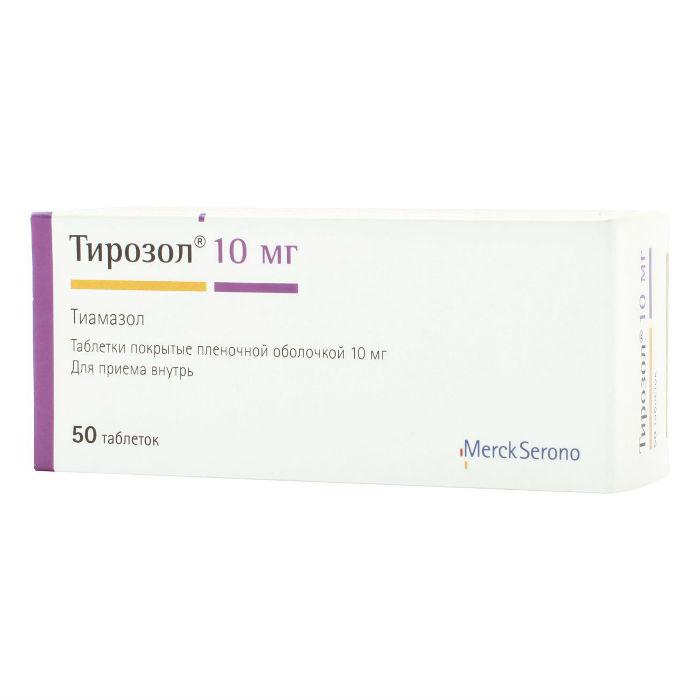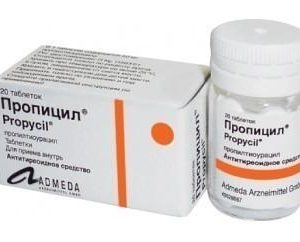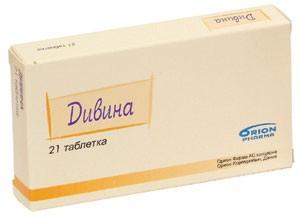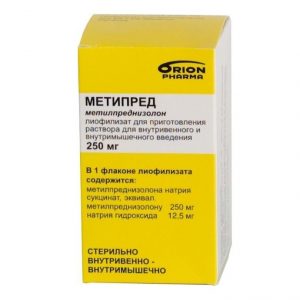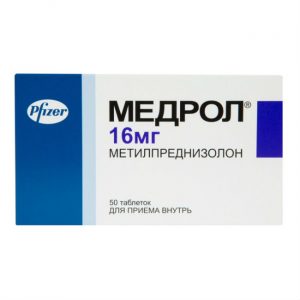Description
packaging 50 pcs
Pharmacological action
Thiocetam belongs to the group of cerebroactive drugs, shows nootropic anti-ischemic and antioxidant properties.
The pharmacological effect of the drug is due to the mutually potentiating effect of thiotriazoline aipiracetam. Piracetam is a cyclic derivative of GABA, a nootropic agent acts directly on the brain, improving functions such as learning, memory, attention and consciousness, without having a sedative or psycho-stimulating effect.
At the neuronal level, piracetam facilitates various types of synaptic transmission, exerting a predominant effect on the density and activity of postsynaptic receptors.
The hemorheological effects of piracetam are associated with its effect on red blood cells,
Pharmacokinetics of
Tyrosol is rapidly and almost completely absorbed by ingestion. Cmax in plasma is achieved within 0.4-1.2 hours. It practically does not bind to blood plasma proteins. Tyrosol accumulates in the thyroid gland, where it is slowly metabolized. Small amounts of thiamazole are found in breast milk. T1 / 2 – about 3-6 hours, with liver failure, it increases. No dependence of kinetics on the functional state of the thyroid gland was revealed. Metabolism of the drug Tyrosol is carried out in the kidneys and liver, excretion of the drug is carried out by the kidneys and with bile. 70% of tyrosol is excreted by the kidneys within 24 hours, with 7-12% unchanged.
Indications
thyrotoxicosis
preparation for the surgical treatment of thyrotoxicosis
preparation for the treatment of thyrotoxicosis with radioactive iodine
therapy in the latent period of the action of radioactive iodine (performed before the onset of radioactive iodine – for 4 ² 6 months) when, due to the general condition or for individual reasons, it is impossible to perform radical treatment
the prevention of thyrotoxicosis with the prescription of drugs yo Yes (including the use of iodine-containing radiopaque agents), in the presence of latent thyrotoxicosis, autonomous adenomas, or a history of thyrotoxicosis.
Contraindications
hypersensitivity to thiamazole and thiourea derivatives or any other component of
agranulocytosis during previous treatment with carbimazole or thiamazole
granulocytopenia (including the history of treatment with sperlazolazole srpolazrdamel during
pregnancy, patients with rare inherited diseases associated with galactose intolerance, lactase deficiency or glucose-galactose malabs syndrome rbtsii (contains lactose)
children aged 0 to 3 years.
Caution: should be used in patients with very large goiter, narrowing of the trachea (only short-term treatment in preparation for surgery), and with liver failure.
Use during pregnancy and lactation
Lack of treatment for thyroid hyperfunction during pregnancy can lead to serious complications such as premature birth and fetal malformations. Thiamazole crosses the placental barrier and can reach the same concentration in the fetal blood as in the mother. Due to the fact that the effect of tiamazole on the fetus cannot be completely excluded, during pregnancy, the drug should be prescribed after a full assessment of the benefits and risks of its use in the minimum effective dose without additional administration of levothyroxine.
Doses of thiamazole significantly higher than recommended may cause goiter and hypothyroidism in the fetus, as well as reduced birth weight.
During lactation, treatment of thyrotoxicosis with the drug Tyrosol can be continued if necessary. Since tiamazole passes into breast milk and can reach a concentration in it that corresponds to its level in the mother ² ¢s blood, hypothyroidism may develop in a newborn. Therefore, if it is necessary to continue treatment of thyrotoxicosis during breastfeeding, Tyrosol should be taken in low doses (up to 10 mg / day) without additional administration of levothyroxine.
Composition
Each tablet contains:
Core:
Active ingredient: tiamazole 10 mg.
Excipients: colloidal silicon dioxide – 2 mg, sodium carboxymethyl starch – 2 mg, magnesium stearate – 2 mg, hypromellose 2910/15 – 3 mg, talc – 6 mg, cellulose powder – 10 mg, corn starch – 20 mg, lactose monohydrate – 195 mg.
Film coating: iron oxide yellow – 0.54 mg, iron oxide red – 0.004 mg, dimethicone 100 – 0.16 mg, macrogol 400-0.79 mg, titanium dioxide – 0.89 mg, hypromellose 2910 / 15-3 , 21 mg.
Dosage and administration
Inside, after eating, without chewing, with plenty of fluids.
The daily dose is prescribed in one dose or divided into 2-3 single doses. At the beginning of treatment, single doses are used throughout the day at a strictly defined time.
A maintenance dose should be taken in 1 dose after breakfast.
Thyrotoxicosis: depending on the severity of the disease, 20 40 mg / day of tyrosol for 3 6 weeks. After normalization of thyroid function (usually after 3 8 weeks), they switch to a maintenance dose of 5 20 mg / day. From this time, an additional dose of levothyroxine is recommended.
In preparation for the surgical treatment of thyrotoxicosis: 20 40 mg / day is prescribed until the euthyroid state is reached. From this time, an additional dose of levothyroxine is recommended.
In order to reduce the time required to prepare for the operation, beta-blockers and iodine preparations are additionally prescribed.
In preparation for treatment with radioactive iodine: 20 40 mg / day until the euthyroid state is reached.
Therapy in the latent period of the action of radioactive iodine: depending on the severity of the disease – 5 20 mg before the onset of the action of radioactive iodine (4 6 months).
Long-term thyrostatic maintenance therapy: 1.25 2.5 10 mg / day with additional small doses of levothyroxine. In the treatment of thyrotoxicosis, the duration of therapy is from 1.5 to 2 years.
Prevention of thyrotoxicosis in the appointment of iodine preparations (including the use of iodine-containing radiopaque agents) in the presence of latent thyrotoxicosis, autonomous adenomas or thyrotoxicosis in the anamnesis: 10 20 mg / day of Tyrosol and 1 g of potassium perchlorate per day for 8 10 days before taking iodine-containing drugs.
Dosage in children. Not recommended for use in children from 0 to 3 years. For children from 3 to 17 years of age, the drug Tyrozole is prescribed in an initial dose of 0.3-0.5 mg / kg body weight, which is divided into 2-3 equal doses, the maximum recommended daily dose for children weighing more than 80 kg is 40 mg / day
Maintenance dose – 0.2-0.3 mg / kg, if necessary, levothyroxine is additionally prescribed.
Dosage in pregnant women. Pregnant women are prescribed in the lowest possible doses: a single dose – 2.5 mg, daily – 10 mg.
In case of liver failure, the minimum effective dose of the drug is prescribed under close medical supervision.
When preparing patients with thyrotoxicosis for surgery, the drug is treated until the euthyroid state is reached within 3-4 weeks before the planned day of surgery (in some cases, longer) and ends the day before it.
Side effects of
Circulatory and lymphatic systems: infrequently – agranulocytosis (its symptoms (see “Special Instructions”) may appear even weeks and months after the start of treatment and lead to the need for drug withdrawal) very rarely – generalized lymphadenopathy, thrombocytopenia, pancytopenia.
From the endocrine system: very rarely – insulin autoimmune syndrome with hypoglycemia.
From the nervous system: rarely – a reversible change in taste, dizziness is very rare – neuritis, polyneuropathy.
From the digestive tract: very rarely – an increase in the salivary glands, vomiting.
From the liver and biliary tract: very rarely – cholestatic jaundice and toxic hepatitis.
From the skin and subcutaneous tissues: very often – allergic skin reactions (itching, redness, rashes) very rarely – generalized skin rashes, alopecia, lupus-like syndrome.
From the musculoskeletal and connective tissue: often – slowly progressive arthralgia without clinical signs of arthritis.
General complications and reactions at the injection site: rarely – fever, weakness, weight gain.
Drug Interaction
When treated with anticoagulants, it should be borne in mind that
naproxen may increase bleeding time. Do not use the drug at the same time as other NSAIDs (increased risk of side effects).
Patients receiving concomitant hydantoins, anticoagulants, or other drugs that bind to a large extent with plasma proteins should watch for signs of potentiation or overdose of these drugs.
Nalgesin may reduce the antihypertensive effect of propranolol and other beta-blockers, and may increase the risk of renal failure, associated with the use of ACE inhibitors. Naproxen inhibits the natriuretic action of furosemide. Inhibition of renal clearance of lithium leads to an increase in plasma lithium concentrations. Taking probenecid increases level
Leukogen and folic acid, when co-administered with thiamazole, reduce the risk of leukopenia.
Gentamicin enhances the anti-thyroid action of thiamazole.
There are no data on the effect of other drugs on the pharmacokinetics and pharmacodynamics of the drug. However, it should be borne in mind that with thyrotoxicosis accelerates the metabolism and elimination of substances. Therefore, in some cases it is necessary to adjust the dose of other drugs.
Overdose
With long-term administration of high doses, subclinical and clinical hypothyroidism may develop, as well as thyroid gland enlargement due to increased TSH levels. This can be avoided by reducing the dose of the drug to the state of euthyroidism or, if necessary, by the additional administration of levothyroxine sodium preparations. As a rule, after the withdrawal of the drug Tyrosol, there is a spontaneous restoration of thyroid function. Taking very high doses of thiamazole (about 120 mg per day) can lead to the development of myelotoxic effects. Such doses of the drug should be used only for special indications (severe forms of the disease, thyrotoxic crisis).
Treatment: cancellation of the drug, gastric lavage, symptomatic therapy, if necessary – transfer to an antithyroid drug of another group.
Storage conditions
In a dry place, at a temperature not exceeding 25 ° C.
Expiration
4 years.
Active substance
thiamazole
Terms of delivery from pharmacies
Prescription
dosage form
dosage form
tablets
Merck KGaA, Germany
